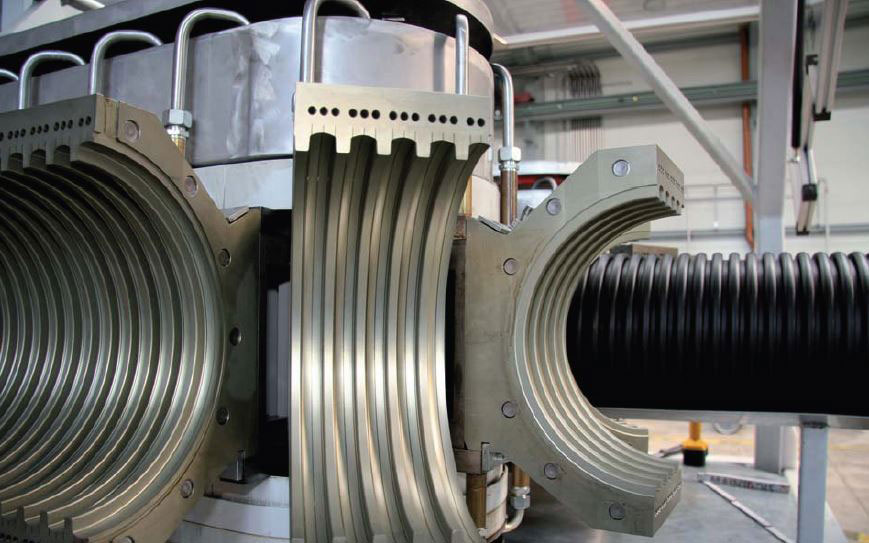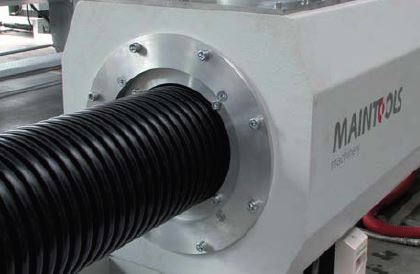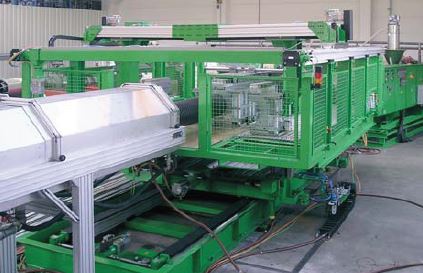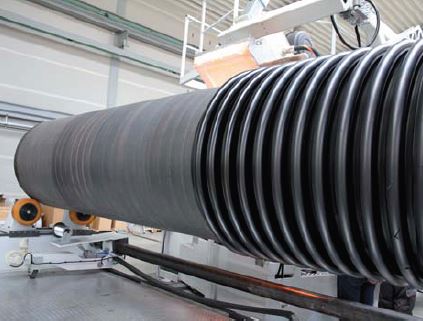Looking for Stainless Steel Corrugated Tube Suppliers in India, Leading Stainless Steel Corrugated Tube Distributors in India, Largest Stainless Steel DIN 1.4301 Corrugated Tube Dealers in India, Top Quality Stainless Steel Corrugated Tube Stockholder in India, Reliable Exporter of SS Corrugated Tube in India
(CSST) Stainless Steel Corrugated Tubes, SS Corrugated Tubes Suppliers, SS Corrugated Tubing, Stainless Steel Corrugated Tubes Manufacturer, Steel Corrugated Tubing, SS Corrugated Pipe, Stainless Steel Tubing Exporter, Steel Corrugated tubes Stockist, SS Corrugated tube, DIN 1.4301 Tubing Suppliers, SS DIN 1.4301 Corrugated Pipe, TP SS Corrugated Tubes Stainless Steel Corrugated tube, DIN 1.4301 SS Corrugated tube, ss Corrugated Pipes Stock Holder, Stainless Steel Corrugated Pipes & tubes in india
Are Looking for Stainless Steel Corrugated Tube in India, We can offer a comprehensive range of Stainless Steel DIN 1.4301 Corrugated Tube. Carrying extensive inventories of SS Corrugated Tube in India, Click here if you want to buy Pipes or want to learn about Stainless Steel Corrugated Tube, Reliable Exporter of Stainless Steel Corrugated Tube in India
- Stainless Steel Grades : 304, 304L, 304H, 310/310S, 310H, 316, 316L, 316H, 316Ti, 317/317L, 321/321H, 347/347H, Corrugated Tube Manufacturing Process / Types of Corrugated Tube /
Corrugated Tube Manufacturing Process

It is well-known that corrugated pipes can offer exceptional material savings, good hydraulic (flow) properties and high compression strength. For these reasons corrugated pipes have shown high growth rates in recent years resulting in the continued development of its production technology. Here we aim to give you an overview of the main characteristics, types and production technologies of corrugated pipes and show how well the corrugated pipe for sewage and drainage applications acquits itself compared to its two main competitors, the concrete pipe and the solid wall PE pipe.
In the early days corrugated pipes benefitted from the growth in demand for telecommunication cable ducting. But in terms of material conversion tonnage, cable ducting has now been overtaken by drainage and sewage pipes for construction and infrastructure. Corrugated pipes can be made of a wide range of different materials such as polyamide (PA),thermoplastic elastomers (TPE), thermoplastic rubber (TPR), polytetrafluoroethylene (PTFE), but the primary raw material in the manufacture of corrugated pipes for water transportation is high-density polyethylene (HDPE), followed by polypropylene (PP) and polyvinyl chloride (PVC).
 Extruded corrugated pipe coming out of corrugator Protos 270 with maintenance-free cooling system with high water discharge, fast mould block change and different vacuum zones with variable positioning
Extruded corrugated pipe coming out of corrugator Protos 270 with maintenance-free cooling system with high water discharge, fast mould block change and different vacuum zones with variable positioning
Corrugated pipes can be as small as 1 mm. In the smaller diameter range up to 50 mm they are usually used for cable protection systems in house installations, and the medical, automotive and food industries. Mid-sized corrugated pipes (50 mm ID to 500 mm OD) are commonly used as protection pipes, drainage, sewage, storm water, civil engineering and conveyor pipes. And in the larger sizes up to 3,000 mm, the pipes are employed for storm water, sewage, control shafts, conveyor pipes and manholes.
Production technologies
Standard pipe corrugators use a continuous chain of mould blocks mounted on one or two oval tracks to vacuum form a continuously extruded tube or pipe. The corrugators can be either of horizontal (example: Unicor) or vertical design (example: Corma), each of them has its own advantages and disadvantages. In addition, corrugators are available in either blow moulding or vacuum forming design. The use of vacuum instead of positive air pressure is now standard for the production of corrugated pipes, although sometimes air pressure is used to assist on larger parts. The vacuum technology uses vacuum to pull the outer surface of the hot plastic pipe against the mould blocks to provide the desired geometry. Vacuum forming of parts requires some air inside the part, which is typically provided via a needle in the die, so that atmospheric pressure can push the part against the mould. The wall distribution is more even on a vacuum-formed corrugators type as the wall is not inflated, according to the advocates of this process. Blowing a profile against a mould may thin the walls in the ridges, a disadvantage since this is precisely where more material is needed.

The company offers corrugators for the production of all known material-saving pipe designs – corrugated pipe, twin wall pipe, ribbed pipe – in the common sizes and a wide diameter range. At the spiral pipe winding process the extruder is usually placed on a movable carriage which is transported on rails along the spiral mandrel
Another basic technical difference is the cooling system. European corrugators typically use water cooled moulds, while North American models are commonly air cooled. Air cooled blocks are more cost-effective while water cooled blocks offer higher cooling efficiency and therefore higher output. In the larger diameter range of 800 mm and above what are known as shuttle corrugators are increasingly employed where a small number of moulds are moved back and forth on rails. Unicor, for instance, offer such shuttle-type corrugators. The corrugator is fed by one or two single screw extruders, usually equipped with barrier screw and grooved feed bush in order to achieve high output of the polyolefin material. If PVC from dry blend is processed, counter-rotating twin screw extruders are employed. The largest corrugators today are about 2,400 to 3,000 mm.

Because of the movement of the carriage device on the rails in relation to the winding device of the mandrel, a spiral winding of the pipe is produced.
Single wall pipe
A single wall corrugated HDPE pipe can be employed for drainage projects where flexibility, lightweight and low cost are important. Multiple drainage applications such as farms, golf courses, parks and playing fields, downspouts run offs, driveway culverts and wet spots on the lawn are possible. The use of single wall plastic pipe is only recommended where drainage water is free of debris and floating material. Perforated corrugated HDPE pipes are often used to control water levels in agricultural land, to collect and transport subsurface drainage, subsurface water collection and leaching action in the mining industry.
Dual/double wall pipe
A dual/double wall pipe is the most common corrugated pipe design for drainage and sewage. Various different designs of pipes are available, such as single channel or double flow channels, and they all have in common a smooth inner surface for good flow rates and a corrugated layer. Double wall corrugated pipes can be produced with either one or two extruders. The latter allows walls with two different materials in a single pipe. In addition there are other corrugated pipe designs that can be found on the market, such as triple wall pipe (smooth inner and outer walls and a corrugated structural core) and Ultra Rip (smooth inner wall with concentric reinforcing ribs that encircle the pipe to provide higher ring stiffness).
Corrugated pipe versus concrete pipe
Compared to concrete pipes the advantages are obvious: for instance, a corrugated DN 600 mm HDPE double-wall pipe weighs only about 21 kg/m, while the concrete drain counterpart weighs about 400 kg/m. This results in easier handling and installation. The roughness coefficient of concrete pipe is about 0.014, a HDPE (double-wall) corrugated pipe is 0.009, leading to a much higher water flow rate. Because of this, the design grade and pipe diameter can also be decreased compared to concrete pipe. Sealing and water tightness are other important points. It is difficult for the concrete pipe to maintain a tight seal as the connection between two pipes is rigid and is therefore not at all flexible. If the pipe is subject to even a tiny movement, unavoidable with the natural rising and falling of the ground, the rigid connection will easily break and start to leak. Corrugated plastic pipes in contrast are able to resist a deflection of up to 30% and thus comfortably bear external loads from installation or moving earth. For non-pressure applications, such as sewage systems, flexible corrugated pipe systems have essentially replaced rigid concrete systems mainly due to the poor joint performance and general tendency to crack as detailed above.
Corrugated pipe versus solid wall pipe
Corrugated pipes also have advantages compared to solid wall (smooth wall) PE pipes. Due to the unique structure of the corrugated pipe, the actual ring rigidity is higher than in normal solid wall PE pipes. This specific structure can lead to weight savings of up to 60% compared to solid wall pipes of the same diameter and ring stiffness. In practical terms, the corrugated pipe can incorporate parts of recycled PE or PP, so the material costs of the pipe can be further reduced. As material savings and easier installation due to lower weight are major issues for large diameter piping systems, corrugated pipes are becoming increasingly popular in this market. With the possibility of making lightweight corrugated pipes in a range of 1,600 mm and above, there are growing opportunities to gain a larger share of the sewage and drainage system market, as well as the refurbishment market. Corrugated pipes for sewage and drainage are well established and are no longer to be considered simply as a niche market. All the major pipe manufacturers now offer, besides the solid wall PE pipes, a wide range of corrugated pipe wall products.
Corrugated versus spiral pipe
Another possibility to produce very large diameter pipes for non-pressure applications is to create a pipe wall by helical winding of extruded PE profiles. This type of pipe is usually used for large diameter sewage and water drainage since it allows the production of pipes of diameters of 3,000 mm and above with relatively low tooling costs. At the spiral pipe winding process the extruder is usually placed on a movable carriage which is transported on rails along the spiral mandrel. Because of the movement of the carriage device on the rails in relation to the winding device of the mandrel, a spiral winding of the pipe is produced. By using different profile die geometries, the extruder can extrude almost any kind of profile with different wall thicknesses continuously or in several layers. This kind of production is particularly suitable for the production of very large diameter pipes in small batch sizes or rarely requested dimensions (dimensions of more than 1,000 mm). The standard length is 6m or less, set by the maximum length of the mandrel. Often the pipes are produced with socket or spigot for subsequent easier connection of the pipes. It is also possible to insert metal reinforcement (usually metal wires). The most serious disadvantage of this pipe design is the continuous helical weld line which limits its use to low internal pressure applications.
Both corrugated and spiral pipes have similar physical properties and complement each other pretty well: they are both flexible, have a high ring-stiffness, and good handling characteristics. For this reason both kinds of pipe are used for sewage or rain water applications and can in addition be applied in manholes. The main difference is that corrugated pipes are produced in a continuous process while spiral pipes are produced discontinuously in several stages. The continuous process to produce corrugated pipes allows the production of lightweight pipes at higher output. At medium production rates of large diameter pipes therefore, the efficiency of a spiral pipe production line is inferior compared to a corrugator. Spiral pipes are currently produced in a diameter range of up to 4,300 mm in accordance with the international standards such as DIN 16961, ASTM F-894 and EN 13476. The main materials here are also HDPE and PP. Besides sewage, large-scale drainage systems and drinking water storage, spiral pipes are used in tank construction and as ventilation pipes. Leading machinery manufacturers for this process are German companies Krah and Bauku.
Stainless Steel Pipes Tube Price List
Stainless Steel Price in India
- Stainless Steel 304 Corrugated Tubes Price in India
US $1-2 to 9 / Meter / US $0.5-8 to 80 / Piece / US $500-5000 / Set - Stainless Steel 304L Corrugated Tubes Price in India
US $1-2 to 9 / Meter / US $0.5-8 to 80 / Piece / US $500-5000 / Set - Stainless Steel 304H Corrugated Tubes Price in India
US $1-2 to 9 / Meter / US $0.5-8 to 80 / Piece / US $500-5000 / Set - Stainless Steel 310/310S Corrugated Tubes Price in India
US $1-2 to 9 / Meter / US $0.5-8 to 80 / Piece / US $500-5000 / Set - Stainless Steel 310H Corrugated Tubes Price in India
US $1-2 to 9 / Meter / US $0.5-8 to 80 / Piece / US $500-5000 / Set - Stainless Steel 316 Corrugated Tubes Price in India
US $1-2 to 9 / Meter / US $0.5-8 to 80 / Piece / US $500-5000 / Set - Stainless Steel 316L Corrugated Tubes Price in India
US $1-2 to 9 / Meter / US $0.5-8 to 80 / Piece / US $500-5000 / Set - Stainless Steel 316H Corrugated Tubes Price in India
US $1-2 to 9 / Meter / US $0.5-8 to 80 / Piece / US $500-5000 / Set - Stainless Steel 316Ti Corrugated Tubes Price in India
US $1-2 to 9 / Meter / US $0.5-8 to 80 / Piece / US $500-5000 / Set - Stainless Steel 317/317L Corrugated Tubes Price in India
US $1-2 to 9 / Meter / US $0.5-8 to 80 / Piece / US $500-5000 / Set - Stainless Steel 321/321H Corrugated Tubes Price in India
US $1-2 to 9 / Meter / US $0.5-8 to 80 / Piece / US $500-5000 / Set - Stainless Steel 347/347H Corrugated Tubes Price in India
US $1-2 to 9 / Meter / US $0.5-8 to 80 / Piece / US $500-5000 / Set
WEIGHT CALCULATOR
 Types of weight Calculator :pipe weight calculator, pipe weight calculation formula in mm, how to calculate weight of pipe in kg/m, structural steel weight calculator, ms pipe weight calculation formula in kg, material weight calculation formula, angle weight calculator, Calculator for Seamless steel pipes, Pipe Weight per Foot Calculator, Metal Weight Calculator - Round Pipe Calculator, Square Pipe Calculator, Rectange Pipe Calculator, Hexagon Pipe Calculator, Octagon Pipe Calculator, Sheet Weight Calculator, Plate Weight Calculator, Tubular Pipe Calculator, Ring Weight Calculator, Pipe Weight Calculator / Click Here If You Are Searching Professional Valves Manufacturers in India Citizen Valves Division / Pipe Dimensions
Types of weight Calculator :pipe weight calculator, pipe weight calculation formula in mm, how to calculate weight of pipe in kg/m, structural steel weight calculator, ms pipe weight calculation formula in kg, material weight calculation formula, angle weight calculator, Calculator for Seamless steel pipes, Pipe Weight per Foot Calculator, Metal Weight Calculator - Round Pipe Calculator, Square Pipe Calculator, Rectange Pipe Calculator, Hexagon Pipe Calculator, Octagon Pipe Calculator, Sheet Weight Calculator, Plate Weight Calculator, Tubular Pipe Calculator, Ring Weight Calculator, Pipe Weight Calculator / Click Here If You Are Searching Professional Valves Manufacturers in India Citizen Valves Division / Pipe Dimensions
We have Exported Steel Pipe Tube / Tubing to over 60 countries including India, United Arab Emirates, Kenya, Qatar, USA, Malaysia, South Korea, Indonesia, Singapore, UK, Bangladesh, Japan, China, Thailand, Taiwan, Italy, Iran, Vietnam, Poland, Egypt, Canada, Turkey, Sri Lanka, Pakistan, Saudi Arabia, Kuwait, Russia, Nigeria, France, Denmark, Germany, Greece, Ukraine, Oman, Switzerland, South Africa, Romania, Colombia, Iraq, Australia, Netherlands, Portugal, Spain, Brazil, Norway, Paraguay, Azerbaijan, Trinidad & Tobago, Mexico, Hong Kong, Philippines, Tunisia, Bahrain, Serbia, Belarus
Looking for Stainless Steel Corrugated Tube Suppliers in India, Leading Stainless Steel Corrugated Tube Distributors in India, Largest Stainless Steel Corrugated Tube Dealers in India, Top Quality Stainless Steel Corrugated Tube Stockholder in India, Reliable Exporter of Stainless Steel Corrugated Tube in India
we are supplying Stainless Steel Corrugated Tube in India Last 28 years, Citizen Metals stocks a wide range of Stainless Steel Corrugated Tube in India, offers a wide range of Stainless Steel Corrugated Tube in India, We are exporting best quality Stainless Steel Corrugated Tube in India, As a market leader in supplying Stainless Steel Corrugated Tube in India
(CSST) Stainless Steel Corrugated Tubes, SS Corrugated Tubes Suppliers, SS Corrugated Tubing, Stainless Steel Corrugated Tubes Manufacturer, Steel Corrugated Tubing, SS Corrugated Pipe, Stainless Steel Tubing Exporter, Steel Corrugated tubes Stockist, SS Corrugated tube, DIN 1.4301 Tubing Suppliers, SS Corrugated Pipe, TP SS Corrugated Tubes Stainless Steel Corrugated tube, SS Corrugated tube, ss Corrugated Pipes Stock Holder, Stainless Steel Corrugated Pipes & tubes in india Price in India
We Export To : Johannesburg, Accra, Kano, Kazakhstan, Egypt, Venezuela, Brazzaville, Jordan, Bamako, Casablanca, Mogadishu, Ethiopa, Port Elizabeth, Kuwait, Azerbaijan, Freetown, Soweto, Colombia, Iraq, Kolwezi, Thailand (Bangkok), Turkey, New York, Argentina, New Zealand, Subra al-Haymah, Sudan, Abu Dhabi, Kaduna, Russia, Oman, Lubumbashi, Giza, Fez, Maputo, Mexico, Mozambique, Harare, Addis Ababa, Lagos, UAE, Colombo, Rabat, Kinshasa, Nigeria, Iran, Chine, Vietnam, Cape Town, Qatar, Cameroon, Dakar, Uganda, Angola, Malaysia, Port Harcourt, Omdurman, Morocco, Abidjan, Antananarivo, Luanda, Australia, Dar es Salaam, Ghana, Houston, Algeria, Ibadan, Nairobi, UK, Indonesia, Yemen, Italy, Trinidad and Tobago, Singapore, Tripoli, Bahrain, Ouagadougou, Democratic Republic of the Congo, Durban, Khartoum, Brazil, Alexandria, Hong Kong, Algiers, Tunisia, Cairo, Pretoria, Africa, Conakry, Maiduguri, Zaria, Sri Lanka, United States, London, Mbuji-Mayi, Douala, Dubai, Germany, Kampala, Canada, South Africa, Yaoundé, Lebanon, Benin, Bulawayo, Saudi Arabia, Israel, Peru, Cyprus.
We Supply To: Trinidad & Tobago, Singapore, Qatar, Ethiopia, United Arab Emirates, Oman, Malaysia, Kuwait, Canada, Australia, United States, New Zealand, United Kingdom, St. Helena, South Africa, India, Nigeria, Ghana, Hong Kong, Saudi Arabia, Philippines, Ireland, Pakistan, South Korea, Iraq, Norway, Finland, Egypt, Netherlands, Denmark, Iran, Kenya, Sweden, Thailand, Indonesia, Bangladesh, Belgium, Taiwan, Greece, Germany, Oman, Tadepalligudem, Lebanon, Zaria, Omdurman, Yemen, Miryalaguda, Chennai, Pretoria, Bangalore, Suryapet, Manipur, Cameroon, Ghana, Karnataka, Muktsar, Kampala, Democratic Republic of the Congo, India, Mogadishu, Ibadan, Bansberia, Cape Town, Lucknow, Bamako, Mizoram, Kano, Fez, Benin, Udgir, Puducherry, Mozambique, Russia, Ethiopa, Maiduguri, Thailand (Bangkok), Jamalpur, Port Harcourt, Maputo, Port Elizabeth, Yaoundé, Addis Ababa, Alexandria, Betul, Freetown, Khartoum, Colombo, Ambala, Luanda, Brazzaville, Morocco, Ouagadougou, Durban, Nagapattinam, Accra, Dar es Salaam, Abu Dhabi, Singapore, Casablanca, Algeria, Rabat, Hong Kong, Bhiwadi, Ahmedabad, Lubumbashi, Tripura, Jaipur, Andhra Pradesh, Qatar, Sadar, Kaduna, Subra al-Haymah, New York, Kinshasa, Soweto, Harare, Kolkata, Giza, Nairobi, Bundi, Benin, Pune, Lagos, Antananarivo, Baraut, Maharashtra, Uganda, Surat, Algiers, Buxar, Abidjan, Tripoli, Bulawayo, Conakry, Angola, Cairo, Johannesburg, Jordan, Dakar, Cyprus, Kerala, Hyderabad, Venezuela, Mumbai, Kolwezi, Delhi, Douala, Ballia, Mbuji-Mayi.
We Export to: We Import to:
Job Vacancy in Citizen Metals
Share This Page



